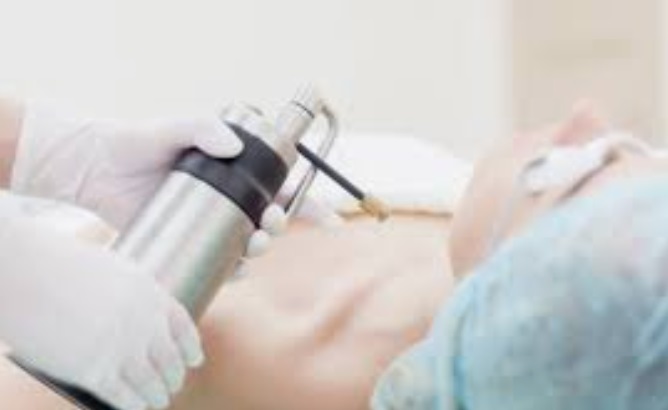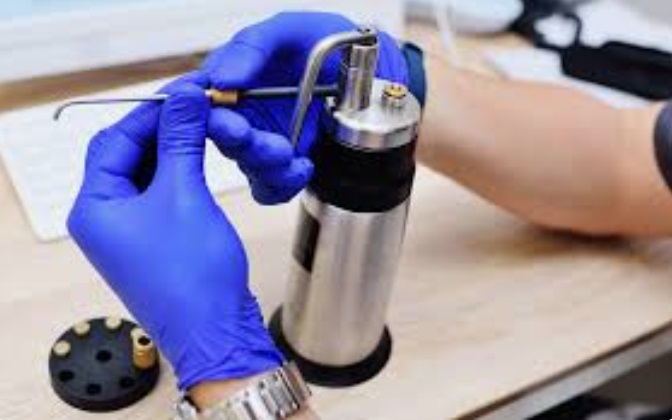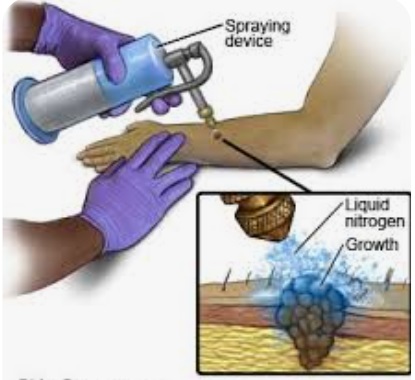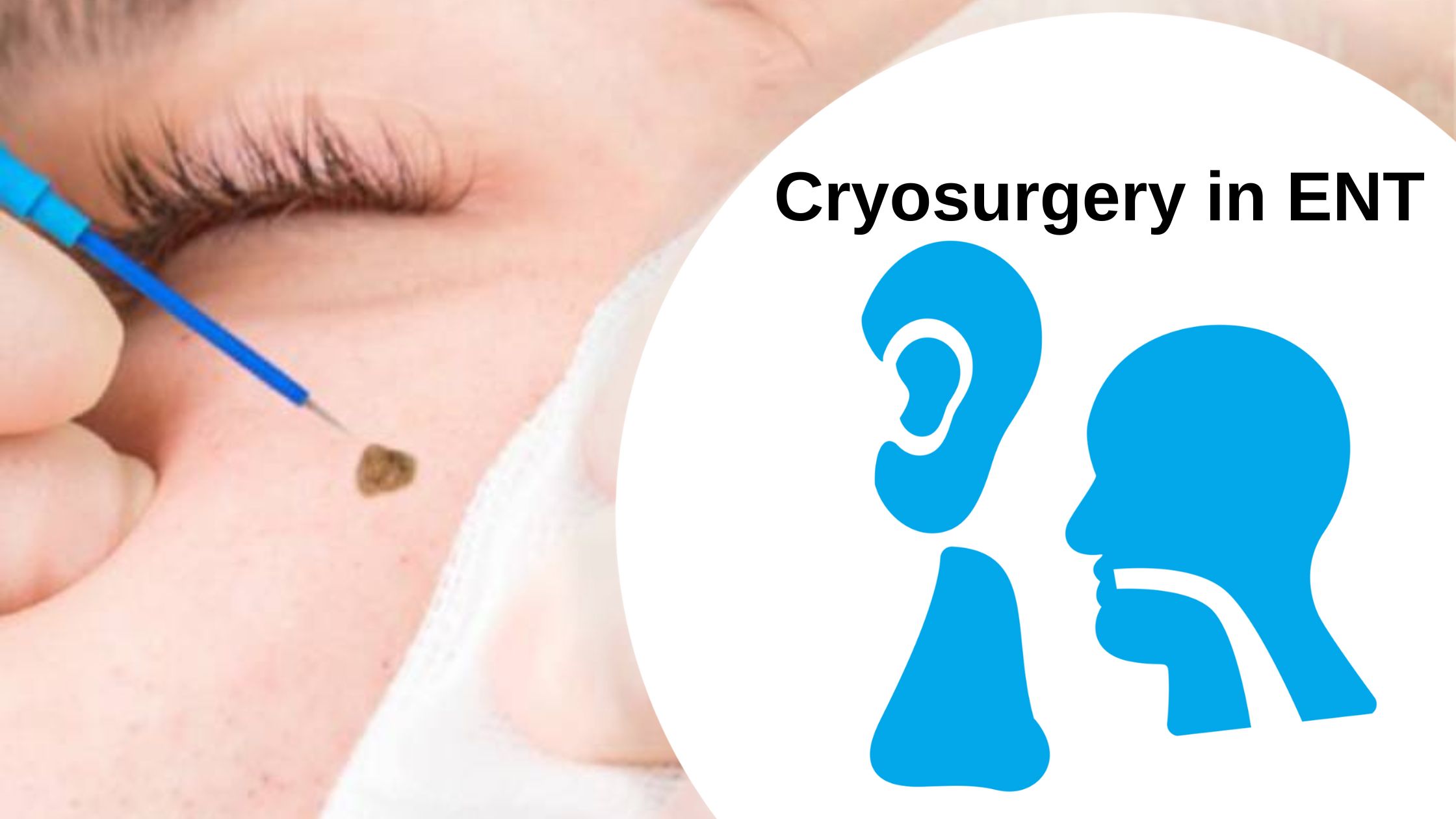Introduction
Cryosurgery is a minimally invasive technique that uses extreme cold to eliminate abnormal tissues. This method has gained popularity in ENT (ear, nose, and throat) medicine due to its precision and effectiveness. In this blog, we’ll explore the applications, benefits, and considerations of cryosurgery in ENT.

What is Cryosurgery?

At –30°C and below, rapid freezing of tissues and slow thawing results in the destruction of tissue. This principle is used in cryosurgery, which has been used to treat benign, premalignant
and malignant lesions.
The freezing agents are used either —
a) by an OPEN method (liquid nitrogen spray or CO2 snow) or
b) through a CLOSED system cryoprobe, which is based on Joule-Thomson effect (rapid expansion of compressed gas through a small hole produces cooling). The freezing agents employed in closed systems probes are: liquid nitrogen, nitrous oxide, or CO2.
The probes are available in different sizes and designs and produce a tip temperature of –70°C. The thermocouples of probes can be inserted into the tissue to monitor the temperature.
Cryosurgery effectively treats various conditions while minimizing impact on healthy surrounding tissue.
Tissue Effect of CRYOSURGERY –

The cell death occurs through following mechanisms –
1) Dehydration of cells
Dehydration occurs due to the crystallization of intracellular and extracellular water with a consequent rise in electrolyte concentration.
The pH changes as the buffering substances crystallite out.
Urea and dissolved gases increase to reach toxic concentrations, which cause cell death.
2) Denaturation of cell membrane lipoproteins
Cryosurgery makes cell membrane permeable to cations. Thawing of cells, which become full of cations, results in lysis of cells.
3) Thermal shock arrests the cellular respiration.
4) Vascular stasis of both arterial and venous blood results in ISCHEMIC INFARCTION.
Cryosurgery is useful in the treatment of vascular lesions (hemangioma, angiofibroma, and glomus tumors) because thrombosis of capillaries results in less bleeding.
5) Autoantibodies specific to the frozen tumor tissues may provide tissue-specific immunity to subsequent recurrence.
Technique of CRYOSURGERY –
1) Anesthesia:
Cryosurgery can be done under either local anesthesia, or mild sedation, or even without anesthesia because tissue freezing itself causes numbness.
2) Freezing:
The cryoprobe is applied into or upon the tissues (which are insulated and include a margin of normal tissue) for 3–8 minutes. It results in rapid freezing.
3) Thawing:
Then the frozen tissue is allowed to thaw slowly.
4) Repetitions:
The procedure may be repeated as required once or twice to achieve the best result.
5) Thermocouple:
If available, a thermocouple will ensure freezing at an adequate depth.
6) Healing:
The area is allowed to heal by secondary intention. The necrotic slough usually falls off in 3–6 weeks. If needed, repeat the cycles of cryotherapy.
Application of CRYOSURGERY in ENT –
The increasing availability and popularity of lasers are fast declining the indications of cryosurgery. Its lower cost still makes it an option in developing countries –
1) Benign vascular tumors:
Hemangiomas of the skin, oral cavity, and oropharynx, angiofibroma, and glomus tumor.
2) Premalignant lesions:
Leukoplakia of the cheek, tongue, floor of the mouth, and solar keratosis (precancerous condition of the skin).
The scarring is less, and the quality of the regenerated epithelium is better than that of diathermy.
3) Malignant lesions:
Intraepithelial carcinoma (Bowen’s disease) and basal cell carcinoma of skin.
Palliation of advanced cancers, recurrent and residual tumors.
Debulking of tumor facilitates deglutition and respiration. It reduces bleeding and relieves pain. Cryotherapy does not cause necrosis of bone and cartilage, which may underlie the
lesion. Recurrent tumors and ill-defined lesions are not good cases for cryotherapy.
4) Nose:
Hypertrophied turbinates: Reduction of turbinates improves the airway. In allergic rhinitis, it controls sneezing and rhinorrhea.
Nasal Polyps: Cryosurgery can reduce nasal polyps, helping alleviate symptoms like congestion and impaired breathing.
Chronic Rhinitis: For persistent rhinitis, cryosurgery targets overactive nasal tissue, reducing symptoms and improving quality of life.
5) Tonsils:
Tonsillar Cryptolysis: Cryosurgery is used in cryptolysis to treat tonsil stones and chronic tonsillitis, decreasing discomfort and recurrence.
Cryodestruction of tonsils can be done in poor-risk patients.
6) Vocal Cord Lesions:
This procedure treats benign lesions on the vocal cords, preserving voice quality while removing unwanted tissue.
Benefits of Cryosurgery in ENT
1) No need of general anesthesia. Therefore, it is useful for patients at a low risk.
2) Reduced Bleeding: The freezing process decreases blood flow, resulting in less bleeding during and after the procedure.
The patients with bleeding disorders or coagulopathies can be managed.
3) Palliation in multiple and recurrent cancers where a second course of radiotherapy cannot be used.
4) Minimal after-effects, such as discomfort and pain.
5) Minimal scarring: Therefore, it can be used at sites well-known for keloid development, such as the sternal area.
6) Cryosurgery can be done as an OPD procedure.
7) Lower cost in comparison to laser.
8) Minimally Invasive: The procedure involves no large incisions, leading to reduced recovery time and discomfort.
9) Precision: It specifically targets diseased tissues, minimizing damage to surrounding areas.
11) Quick Recovery: Patients often recover faster compared to traditional surgical methods.
Disadvantages of CRYOSURGERY –
1) Excisional biopsy and histopathological assessment of tumor margins are not possible.
2) Depth of freezing is unpredictable.
3) Causes skin depigmentation and loss of hair (destruction of hair follicles).
4) Temporary Swelling: Some patients may experience swelling post-procedure, which typically resolves quickly.
5) Nerve Damage: In rare cases, there is a risk of nerve damage, which should be discussed with a healthcare provider.
6) Effectiveness: Not all ENT conditions are suitable for cryosurgery, and outcomes can vary based on individual cases.
Conclusion
Cryosurgery is a valuable tool in ENT medicine, offering a less invasive alternative to traditional surgeries. Its use in treating nasal polyps, chronic rhinitis, and vocal cord lesions highlights its versatility and effectiveness. As with any medical procedure, consulting with an ENT specialist is crucial to determine the best treatment approach for your specific condition. Embracing advancements like cryosurgery can lead to improved patient outcomes and enhanced quality of life.
Thank You
MEDICAL ADVICE DISCLAIMER:
This blog including information, content, references, and opinions is for informational purposes only.
The Author does not provide any medical advice on this platform.
Viewing, accessing, or reading this blog does not establish any doctor-patient relationship.
The information in this blog does not replace the services and opinions of a qualified medical professional who examines you and prescribes medicines.
If you have any questions of a medical nature, please refer to your doctor or the qualified medical personnel for evaluation and management at a clinic/hospital near you.
The content provided in this blog represents the Author’s own interpretation of research articles.
